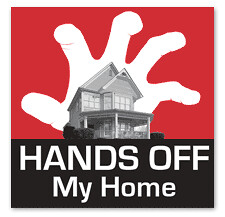azcentral.com Mexico's human rights agency says it will give out detailed maps of the Arizona desert, including rescue beacons and water stations, to guide migrants safely through the most popular and deadliest corridor into the United States.
The maps were designed by a Tucson-based group, Humane Borders, which plans to hold a joint press conference today with the National Human Rights Commission in Mexico City to announce its strategy.
The maps are the latest effort by activists to aid undocumented immigrants as they trek across the border, What a bunch of crap. If they came in the front door -legally- they wouldn't need a map with the rest stops marked. If someone wants to break the law then whatever happens to them is on them. Once they get here then what? "Activists" will then want the government to give these people money for food, free health care, education, so on and so forth. I have no problem with legal immigration. I know Mexicians that have set businesses in the area that do quite well. They are a boon for the local economy -I really love San Jose's shrimp casadia-. But illegal immigration is a drain on the local econmy and on the taxpayer's wallet. If you know me then you knew this was coming: The FairTax would help remove this drain on the taxpayer. When they buy food and clothes they would end up paying the same consumption tax to the federal government that you and I do. And if we could get NC to go with either no income taxes or a consumption tax they would end up paying NC the same as us also. Sounds 'fair' to me.
You can read the whole story in the extended section.
Activists to provide migrants Ariz. maps
Safe routes, stations for water included
Chris Hawley
Republic Mexico City Bureau
Jan. 24, 2006 12:00 AM
MEXICO CITY - Mexico's human rights agency says it will give out detailed maps of the Arizona desert, including rescue beacons and water stations, to guide migrants safely through the most popular and deadliest corridor into the United States.
The maps were designed by a Tucson-based group, Humane Borders, which plans to hold a joint press conference today with the National Human Rights Commission in Mexico City to announce its strategy.
The maps are the latest effort by activists to aid undocumented immigrants as they trek across the border, helping to fuel a raging debate over illegal immigration in Arizona and other parts of the United States.
Two rights commission officials confirmed the quasi-governmental agency had agreed to print and distribute the maps through its state offices to reach Mexican migrants before they ever leave their hometowns. It has not decided how many copies to print or how much it will spend on the project, the officials told The Republic.
They spoke on condition of anonymity pending the official announcement today. Officials in President Vicente Fox's office said Monday that they were unaware of the project and had no immediate comment. The Mexican Foreign Ministry said it would not be involved in distributing the maps.
The plan's proponents say they are trying to prevent deaths, and they deny the maps encourage people to cross.
"This is good information, and it will save lives," said Rev. Robin Hoover, president of Humane Borders.
But border-control advocates say they fear the maps could embolden people to make the trek.
"I'm afraid that maps and water jugs do nothing but give illegal crossers false hope," Arizona Rep. J.D. Hayworth, a Republican, said in a written statement. "Either we convince potential crossers not to make the journey or, failing that, we stop them from crossing the border."
Last year, the Mexican government outraged border-control activists in the United States by publishing a comic book containing safety tips for illegal immigrants. Soon afterward, the southeastern state of Yucatán published its own guide containing detailed information on routes through the desert.
Arizona has become the most traveled corridor for Mexicans trying to enter the United States illegally. Border Patrol agents in Arizona caught more than 577,000 undocumented migrants, most of them Mexicans, during the 2005 fiscal year. At least 279 immigrants attempting to cross the desert died during that time.
Humane Borders has produced maps for each of the four main corridors through Arizona: Douglas, Lukeville, Sasabe and Nogales.
The maps show mountains, roads, railroads and cities. Blue flags show where migrant-aid groups have left water tanks in the desert. Blue stars indicate Border Patrol rescue beacons where migrants can push a button to summon help.
Black lines show how far a migrant can expect to get walking one, two or three days.
The maps use red dots to show where migrants have died during the past four years. Humane Borders used data from the Border Patrol, medical examiners and other agencies to pinpoint each death.
At the top of each map, a bar graph shows the number of deaths during each month of the year. At the bottom are several tips including:
"Go with people you know and trust."
"Don't cross the desert between May and August, because the temperatures are very high."
"Bring enough water and food."
"Know your route well and the distance well before starting."
"Look for tanks of water in the desert that are marked with blue flags."
Large letters say "Don't go! There's not enough water! It's not worth it!"
Future versions of the maps will include circles showing cellular telephone coverage, Hoover said.
In May, Humane Borders distributed a few maps in Sasabe, Sonora, just over the border in Mexico. But the group decided it needed to get the information farther south, to discourage potential migrants before they even leave their hometowns, Hoover said.
The Human Rights Commission pledged its support in December. The agency is technically independent of the Mexican government, but it is funded by Mexican taxpayers and operates under a government charter.
The effort is supported by Pima County, partly as an attempt to help alleviate the expense of dealing with hundreds of corpses found in the desert, said Enrique Serna, a deputy county administrator who accompanied Hoover to Mexico.
Pima County encompasses Tucson and some 115 miles of the Arizona-Mexico border.
Arizona Rep. Jim Kolbe, a Republican, said he supports the maps as a way of saving lives. But the best way of keeping migrants from dying in the desert is by helping Mexico create jobs and reforming U.S. laws to better manage migration, he said.
"It's hard to disagree with giving information to your citizens to save their lives," Kolbe said. "Ideally, what I would prefer is that they hand out flyers saying {grave}You don't have to cross the desert because there are jobs in Mexico, and here is some job information.' But that isn't going to happen, because there aren't jobs in Mexico."
Critics of the maps said they don't do enough to emphasize the dangers, or the illegality, of crossing the border.
"If you want to tell people, {grave}Don't go,' then that's an entirely different handout. You don't give people a map," said Rick Oltman, western field director for the Federation for American Immigration Reform. |














Comments on "Here's Your Map To 'Illegally' Get Into The US"
post a comment